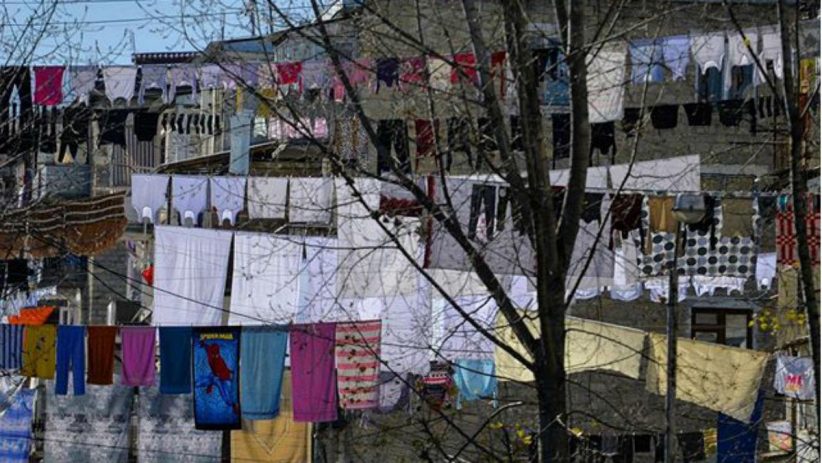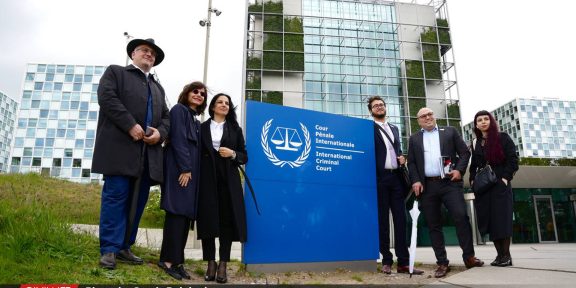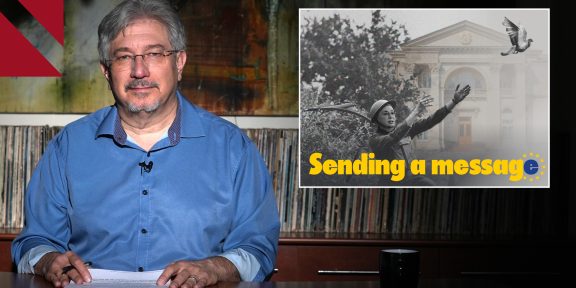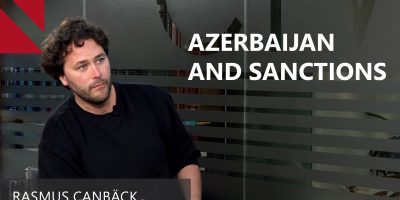By Gevorg Tosunyan, CivilNet
After Armenia’s Velvet Revolution of April-May 2018, which resulted in Nikol Pashinyan’s government coming into power, several moves appeared in Armenian-Azerbaijani relations.
Operative connection
The leaders of Armenia and Azerbaijan met for the first time in the framework of the Commonwealth of Independent States (CIS) summit in Dushanbe, in late September. The two leaders agreed to establish an operative connection.
Pashinyan explained that any information of mutual interest could be transmitted through this channel.
“We can say that any information will reach the President of Azerbaijan within half an hour, and vice versa,” Pashinyan said.
The Ministry of Foreign Affairs of the Republic of Armenia has specified that the operative communication aims at forming and strengthening the atmosphere of peace.
“As to the applicability of the connection, it is indeed a functioning link, and it’s establishment wasn’t just a public statement,” said the Foreign Ministry spokesperson Anna Naghdalyan.
The Ministry of Defense has assigned an employee to be responsible for the operative communication, through which ties between the two countries will be established.
“The Minister of Defense and the Chief of General Staff have the opportunity to contact the Azerbaijani authorities through that person,” Artsrun Hovhannisyan, spokesman for the Defense Ministry, told CivilNet.
It’s worth noting that operative communication between Armenia and Azerbaijan has existed before. It was first used during the war in the early 1990s.The re-establishment of a channel for operative exchange of information is meant to contribute to conflict prevention in the highly conflict-prone region.
When the operative connection was used in the 1990s, it is said that the Head of Nakhichevan Autonomous Republic Heydar Aliyev called the house of Ashot Manucharyan, National Security Adviser to the Armenia’s President, and agreed with Manucharyan’s mother to hold a ceasefire.
According to Manucharyan, Aliyev had called his office when he was out. So Aliyev called his home and Manucharyan’s mother was the one to pick up the phone.
“Aliyev told my mother that a mutual shooting had begun on the border and that it should be stopped. My mother said, “Of course it should be stopped,” and Aliev responded, “Well, I’ll give orders to my side, when Ashot comes, tell him to give orders on your side,” said Manucharyan.
Later Aliyev called President Levon Ter-Petrosyan and informed him that they had come to an agreement with Ashot Manucharyan’s mother, Mrs. Lena to cease the fire. Ter-Petrosyan reacted jokingly, “Well, if you have agreed with Mrs. Lena, then what’s the problem?” The shooting was stopped.
“An established contact between two leaders indicates the presence of the minimal human respect. Without this, we cannot speak of broader prospects, and the rest is an empty rhetoric,” said Tatul Hakobyan, a journalist and author of the “Green and Black”, a book on the Karabakh conflict.
Hakobyan added that unfortunately, “Throughout the negotiations, there was not even minimal mutual respect between Serzh Sargsyan and Ilham Aliyev, and similarly between their foreign ministers Eduard Nalbandyan and Elmar Mammadyarov. They have even mocked each other.”
About Karabakh Taking Part in the Talks
On May 9, the day following his election as Armenia’s Prime Minister, Nikol Pashinyan left for Stepanakert and announced that Nagorno Karabakh should take part in peace talks.
“The most important component of the solution is negotiations in the right format. One of the parties to the conflict, Artsakh, should be a full-fledged negotiator,” Pashinyan said.
Later, Pashinyan repeated this statement several times, saying that Karabakh should negotiate on behalf of itself.
According to Pashinyan, if the previous two presidents of Armenia, Robert Kocharyan and Serzh Sargsyan, who were both from Karabakh and a part of the Karabakh movement, could entitle themselves to negotiate on behalf of Karabakh, then Stepanakert should negotiate on behalf of itself.
Manvel Sargsyan, a political scientist, said he thinks this is a new approach. “This is the information that has created ground for discussions in Azerbaijan. It’s also discussed within the framework of the co-chairing countries. It’s hard to say what it will bring.”
The political scientist thinks there are no significant changes with regard to the conflict settlement. “There are attempts to change the format of the negotiations, but no practical steps are taken at the moment.”
Pashinyan speaks of taking into account the Azerbaijani public’s opinion as well
Prime Minister Nikol Pashinyan’s statement asserting that any peace plan should be agreed upon by the societies of Armenia, Karabakh and Azerbaijan, was a remarkable one in the Karabakh conflict rhetoric.
On October 24, in Parliament, he said, “Do we want to reach a solution that will cause a new explosion or do we want a solution to have an actual solution? The point of view of the Armenian side is that without the settlement of Karabakh’s status, I don’t anticipate the settlement of the conflict.”
A week later, on November 1, Pashinyan again spoke about the Karabakh issue at a Parliament session, saying, “Is there an official in Azerbaijan who is ready to repeat the same statement, that a desired settlement of the Karabakh issue should be acceptable for the people of Azerbaijan, Karabakh and Armenia? If there is such an official, we can say that there is a window of opportunity, otherwise we should continue to try to understand what our colleagues mean when they say a window of opportunity.”
Journalist Tatul Hakobyan says that a solution can be an agreement between the three sides or in a broader sense – between the Armenian people and the Azerbaijani people.
“But thinking about the capitulation of one of the parties can not be a solution. Unfortunately, in both societies, positions have become more deeply rooted over the past 10 to 15 years,” Hakobyan said.
Hakobyan pointed out the significance of the vocabulary being used to name the territories around Nagorno-Karabakh.
In the 1990s, all of the leaders of Armenia, even those of nationalistic circles, used the term “occupied territories.” Then they started using “security belt”, then “buffer zone”, later “liberated areas”, and now “part of the constitution” [according to 2006 constitution of Nagorno Karabakh, until the restoration of the territorial integrity of the Republic of Artsakh and the adjustment of the borders, public power is exercised in the territory, which is factually under the jurisdiction of the Republic of Artsakh].
What do the citizens think
The villages of Vazashen, Movses, Nerkin Karmir Aghbyur and Aygepar in Armenia’s border region, Tavush, have long been accustomed to shootings from the Azerbaijani side. However, it has been relatively quiet in recent months. The main issue of concern is the end of the ceasefire.
“Following the Velvet Revolution, the situation at the border has calmed down,” said Vazashen community leader Lorik Badiryan. “Serious shootings were heard twice, but we were not in danger.”
He says that previously the situation was more complicated; there were shootings almost every month. “The most targeted areas are our village [Vazashen] and Berkaber, but now it’s quiet in this part of the region.”
“From 2014 to 2016, it was almost a state of war. The shootings were permanent, but now it is not as complicated, ” says Narek Sahakyan, head of Baghanis village in Tavush region.
Although people are not facing the violence in Yerevan, they are still highly concerned about the situation. Some of them say that they have heard less about deaths at the border this year, in comparison to previous years.
Yerevan resident Taron Eloyan said, “Before, we heard about soldiers’ deaths at the border several times a month. This provokes distrust toward the government’s policy. Now, at least in the media, you come across such news relatively less.”
According to Yerevan resident Artur Karapetyan, nothing has changed in Armenian-Azerbaijani relations, only different statements have been made. “The war of April 2016 came to prove that nothing had been done before in the negotiations. The new authorities of Armenia seem to be more willing to handle the problem, but we do not see serious impetus. “
Another citizen, Arman Yaralyan, believes that a change in the legal relationship between Armenia and Karabakh are important for solving the Karabakh problem. Nagorno Karabakh has not been recognized by any country of the world, including Armenia. Yaralyan thinks positively of the new government of Armenia, but emphasizes the importance to Karabakh’s participation in the negotiations.
Thoughts on a survey
A few days ago, CivilNet posted a survey on the options of a Karabakh conflict settlement. 51 percent of 1400 respondents believe that the Karabakh issue can be settled in case of “unconditional capitulation of Azerbaijan,” 22 percent think that “the Karabakh issue is already settled for the Armenian side” and only 11 percent think that the conflict can be settled by the resolution “territories in exchange for status.”
Tatul Hakobyan said that the roots behind the “not giving up a piece of land” approach in Armenia should be looked at in Azerbaijan first.
“Parallel to growth of warlike rhetoric in Azerbaijan and statements on returning Yerevan to Azerbaijan, the public opinion in Armenia becomes more radicalized,” he said. He also emphasized that if leaders understand this reality and aspire to move towards peace, they need to step back from such rhetoric and prepare their people for peace, not war.
Read the article in Armenian
In picture: A view from Stepanakert
















